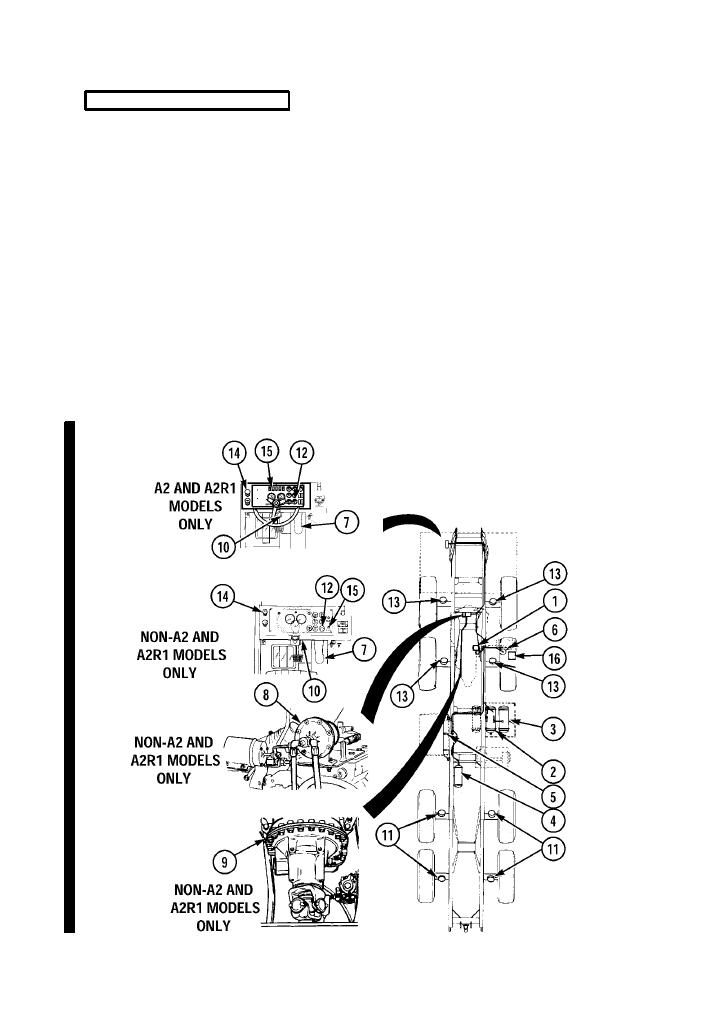
TM 9-2320-279-10-2
Equipment Differences and Technical Data (Cont)
1-33. AIR SYSTEM (CONT).
Once air pressure in reservoir (2) rises above 75 psi (517 kPa), a valve opens and
allows reservoirs (3, 4, and 5) to be pressurized up to 120 psi (827 kPa). Air from
reservoir (4) goes to the brake treadle valve (10). This air controls the rear axle
service parking brakes (11). Air pressure in this system is shown by the red needle
on the AIR PRESS gage (12). Air from reservoir (3) goes to the brake treadle valve
(10). This air controls the front axle service brakes (13). Air pressure in this system
is shown by the green needle on the AIR PRESS gage (12).
The PARKING BRAKE valve (14) controls air from reservoirs (3 and 5) and
applies or releases the rear axle service (parking) brakes. Reservoirs (3, 4, and 5)
are interconnected so that if one reservoir fails, air is supplied to release the rear
axle service (parking) brakes from whichever reservoir is functioning. If air
pressure falls below 60 to 75 psi (414 kPa to 517 kPa), a buzzer will sound and
the AIR indicator (15) will light. Later versions of the parking brake valve
incorporate an automatic feature that applies the parking brakes when system
air pressure drops to 30 psi (206 kPa) or less.
On the M984A1 the front brake actuator valve (16) is used to apply the front
axle service brakes when using heavy-duty winch.
Change 7

